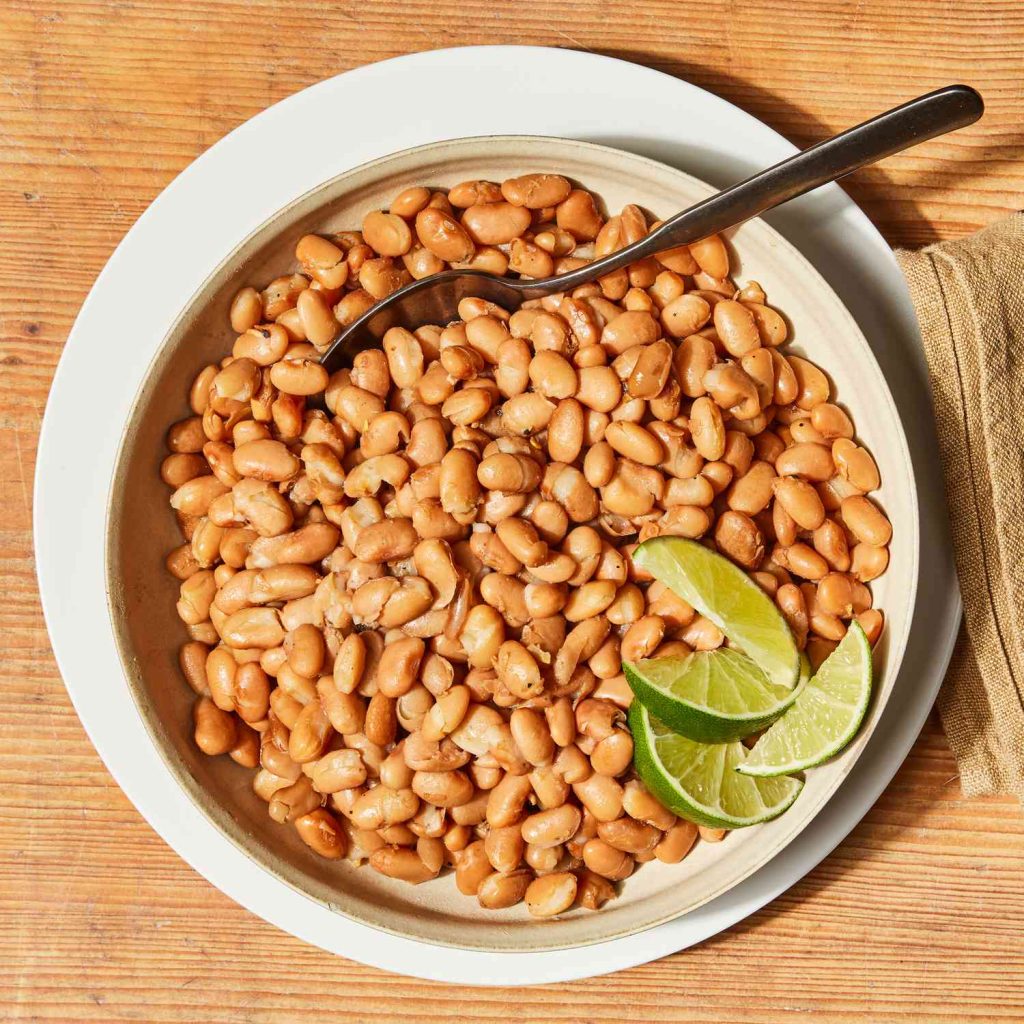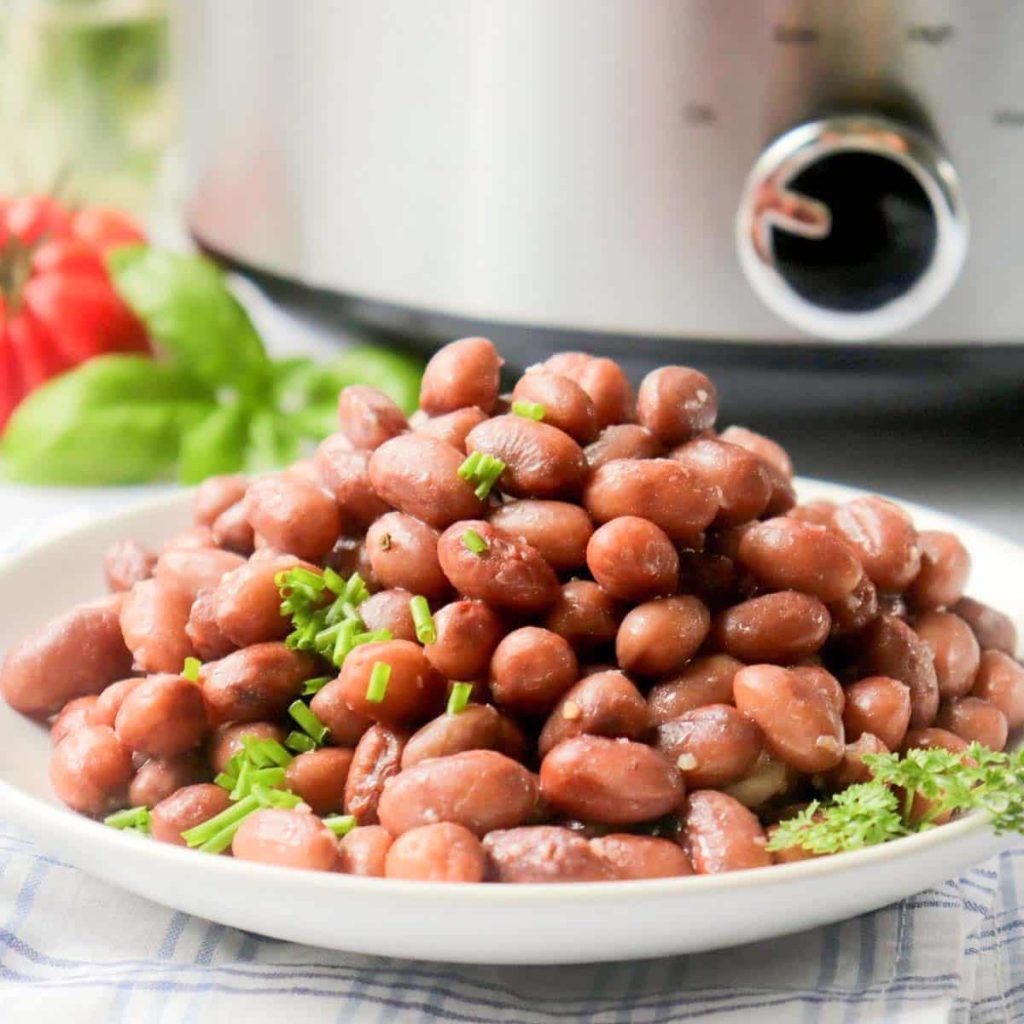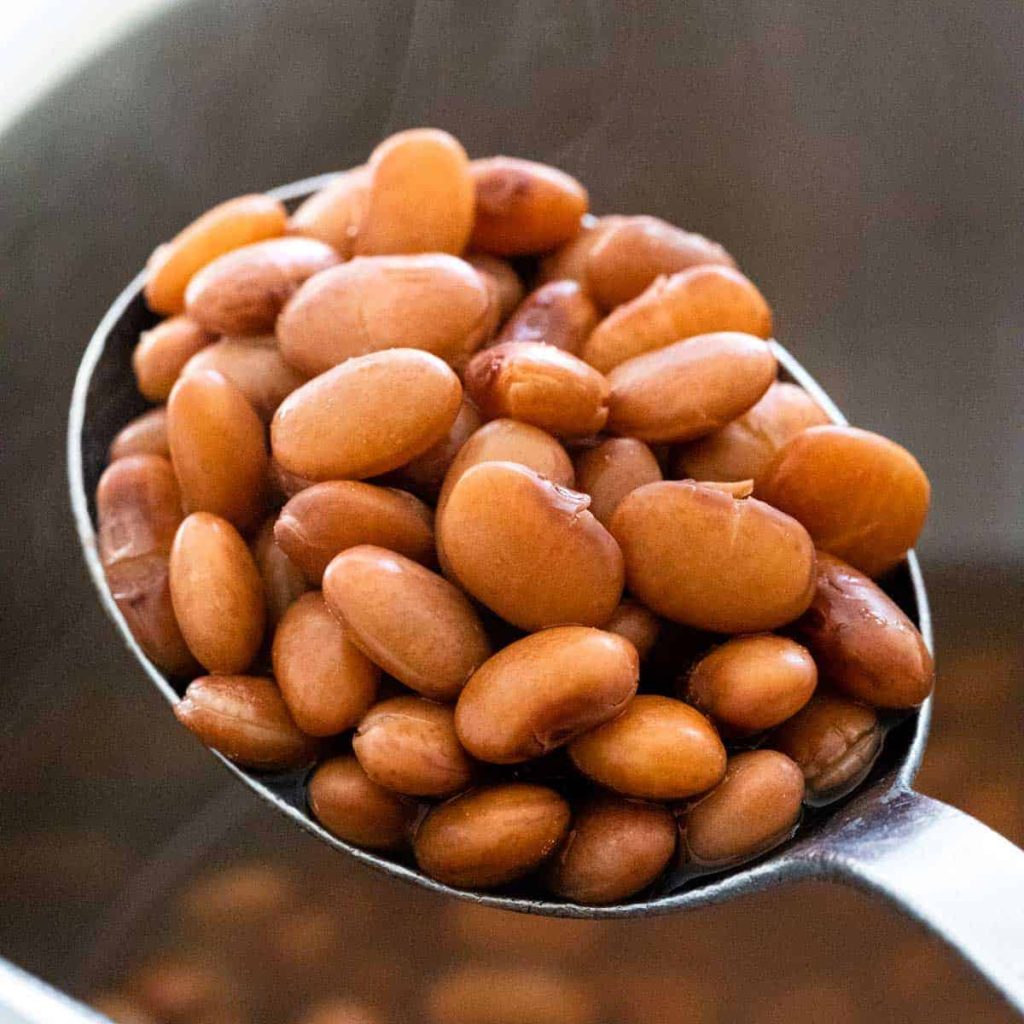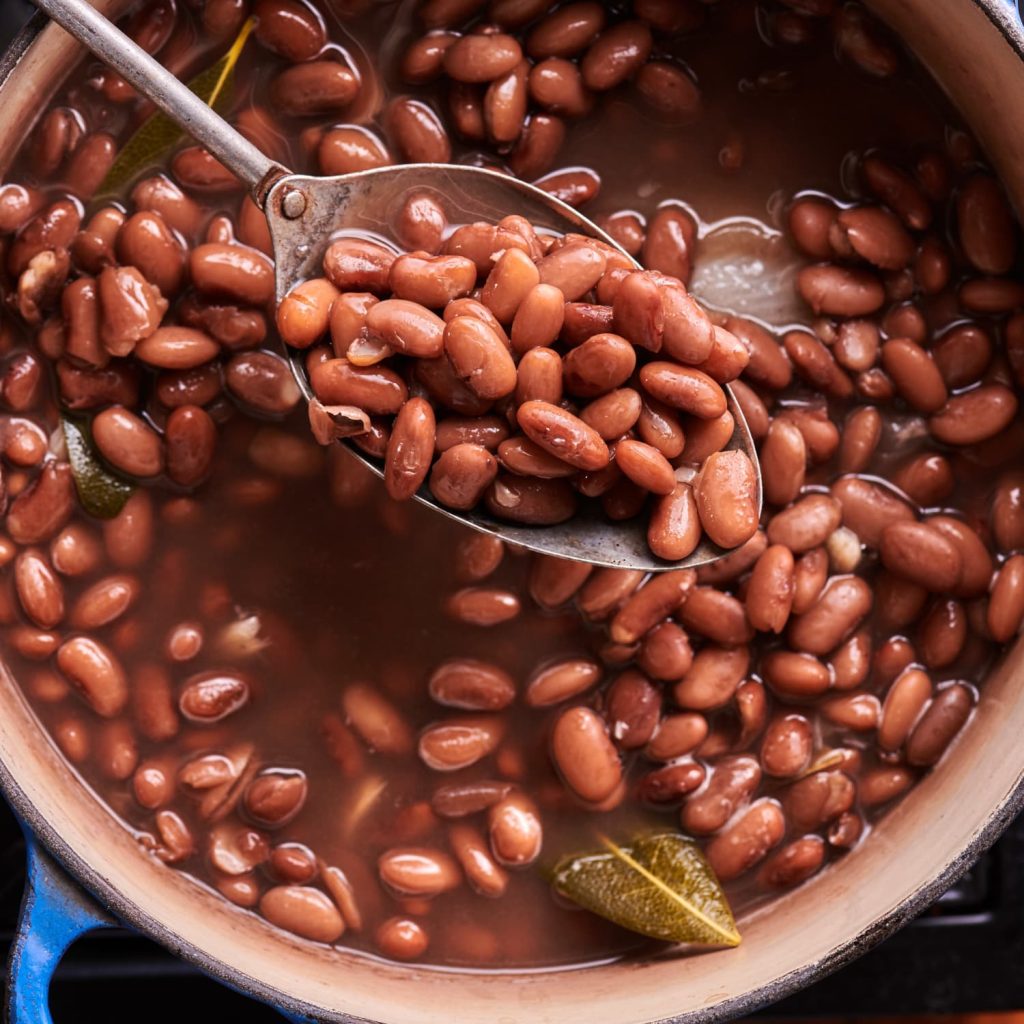Stovetop Pinto Beans: Your Step-by-Step Guide
Introduction to Stovetop Pinto Beans
Cooking pinto beans on the stove is simple and rewarding. This method offers control over texture and flavor. You’ll need a sturdy pot, fresh water, and time. In this guide, we’ll show how to cook pinto beans on the stove. We’ll cover everything from selecting ingredients to serving suggestions. Whether you’re a bean aficionado or a newcomer, you’ll find these steps easy to follow. Let’s begin your journey to delicious, homemade pinto beans cooked on the stovetop.
Essential Ingredients for Cooking Pinto Beans
To begin cooking pinto beans on the stove, you’ll need several key ingredients. Here’s a straightforward list:
- Dry pinto beans: Start with high-quality, dry pinto beans for the best results.
- Fresh water: Needed for both soaking and cooking the beans.
- Salt: Enhances the flavor of the beans. Add after cooking to prevent toughening.
Additionally, while not essential, you may choose to include:
- Onion: Adds a rich base flavor.
- Garlic: Infuses the beans with a savory note.
- Bay leaves: Provide a subtle, herbal fragrance.
Ensure you have these ingredients ready before you start the soaking process. Gathering your essentials sets the stage for perfectly cooked pinto beans, rich in flavor and texture. Remember, quality ingredients lead to a quality dish, so don’t skimp here!

Preparing the Pinto Beans for Cooking
Before starting the cooking process, preparing the pinto beans is crucial. Here’s how to get your pinto beans ready for the stove:
Sorting the Beans
Begin by spreading the dry pinto beans on a flat surface. Look out for any debris, stones, or shriveled beans. Pick out and discard these undesirables. This step ensures you’ll only be cooking the best beans.
Rinsing the Beans
After sorting, rinse the beans with cool, running water. Use a colander to make this easy. Rinsing removes any dust or residue from the beans, providing a cleaner taste.
Soaking the Beans (Optional)
Some prefer to soak their beans before cooking. Soaking can reduce cooking time and make beans less likely to split. However, it’s optional. If you skip soaking, just cook the beans for a longer period.
Preparing your pinto beans properly is the foundation of knowing how to cook pinto beans on the stove. It sets you up for a successful cooking session, leading to a pot full of savory, tender beans. Up next, we’ll dive into the soaking methods available, and you can decide which works best for your schedule and preferred texture.
Soaking the Beans: Overnight vs. Quick Soak Method
When learning how to cook pinto beans on the stove, soaking plays a key role. Soaked beans cook faster and more evenly. They also tend to be easier to digest. There are two main soaking methods: the overnight soak and the quick soak. Here’s a brief rundown of each.
Overnight Soak
This traditional method is straightforward.
- Place beans in a large pot.
- Cover with water by two inches.
- Let them soak for 8 hours, or overnight.
- Drain and rinse before cooking.
The overnight soak is ideal for those who plan ahead. It’s simple and requires little attention. The beans will be plump and ready to cook the next day.
Quick Soak Method
For those short on time, the quick soak is a lifesaver.
- Put beans into a pot on the stove.
- Add water to cover by two inches.
- Bring to a boil, then turn off heat.
- Cover and let sit for one hour.
- Drain, rinse, and proceed to cook.
This method cuts down soaking time significantly. It’s perfect for when you want pinto beans on the day’s menu.
The choice between overnight and quick soaking doesn’t have to be hard. Opt for overnight if you can wait. If not, the quick soak will do the trick. Regardless of method, properly soaked beans are a cornerstone for how to cook pinto beans on the stove. Up next, we will cover the step-by-step instructions for the cooking process.

Cooking Process: Step-by-Step Instructions
Once your pinto beans have soaked, it’s time to cook them. Here’s a simple guide to follow.
- Transfer the soaked beans to a large pot.
- Cover the beans with fresh water by two inches.
- Bring the water to a gentle boil over medium heat.
- Once boiling, reduce the heat to a simmer.
- Skim off any foam that rises to the surface.
- Add a pinch of salt, if desired, but doing so later can help keep the beans tender.
- Cover the pot with a lid slightly ajar.
- Stir the beans occasionally to prevent sticking.
- Check the beans after one hour.
- Add more water if it’s getting low, always keeping the beans submerged.
- Test for doneness by tasting a bean. It should be tender but not mushy.
- Cook until you reach the perfect consistency, typically 1 to 2 hours.
Remember, cooking times can vary based on the age of the beans and whether you soaked them. Keep testing and tasting every 30 minutes after the first hour until they’re just right. Enjoy your perfectly cooked stovetop pinto beans as a versatile side or use them in other dishes.
Tips for Perfectly Cooked Pinto Beans
Achieving perfectly cooked pinto beans on the stove involves a few extra tips. Here are some to help you turn out a great pot of beans every time:
- Monitor the Simmer: Keep the simmer low and gentle. A violent boil can break the beans apart.
- Avoid Stirring Too Much: Stir occasionally, but not too often. Over-stirring can also cause the beans to break.
- Test the Beans Often: Start checking for doneness after the first hour. Remember, they should be tender, not mushy.
- Salt Sparingly at First: Add a small amount of salt at the beginning or mid-cooking to enhance flavors without toughening the skins.
- Cook Beans Uncovered: An open pot allows evaporation which can help thicken the bean broth and concentrate flavors.
- Use Fresh Beans: Older beans take longer to cook and are often less flavorful. Fresh beans make a noticeable difference.
By following these simple tips, you’re sure to have perfectly cooked pinto beans that are ideal for a variety of dishes. Next, let’s explore the spices and herbs that can elevate your pinto beans to the next level.

Flavor Enhancements: Spices and Herbs to Use
Once your pinto beans are cooking, you can enhance their taste with spices and herbs. These add depth to the beans’ natural flavor. Here are some top choices:
- Cumin: Adds warmth and a smoky hint. It’s a staple in bean dishes.
- Chili Powder: Gives a kick of spice, ideal for a bolder taste.
- Oregano: Brings in a touch of herbal sharpness, enhancing overall savoriness.
- Paprika: Offers a sweet and peppery zest, perfect for depth.
- Coriander: Works well with cumin, providing a citrusy undertone.
- Thyme: Imparts a subtle, earthy layer to the beans.
Introducing these flavors should be done with balance in mind. Start with small amounts; you can always add more as you cook. Tasting periodically is key to achieving the flavor profile you desire. If you’re aiming for specific cuisine influences, select spices that align with that culinary tradition. Remember, knowing how to cook pinto beans on the stove involves both technique and artistry in flavoring.
Serving Suggestions: Pairing Pinto Beans with Meals
When your stovetop pinto beans are ready, pairing them with meals is exciting. Pinto beans serve as a versatile and hearty addition to various dishes. Here’s how you can make the most of them in your meals:
- Create Hearty Bowls: Top a bowl of rice or quinoa with your beans. Add cheese, salsa, and avocado for a Tex-Mex twist.
- Stir into Soups and Stews: Pinto beans add substance to any soup or stew. They absorb flavors well, enriching the dish.
- Side Dish: Serve them plain with a sprinkle of herbs. They complement meaty mains like pork chops or steak.
- Packed Burritos: Roll up some beans with rice, cheese, and veggies in a tortilla. It’s a filling, portable meal.
- Enchiladas and Tacos: Use the beans as a filling in enchiladas or tacos. They blend perfectly with other fillings like chicken or beef.
- Bean Salads: Toss beans with chopped veggies, a vinaigrette, and fresh herbs. It’s a refreshing lunch option or side.
- Mash for Dips: Mash cooked beans to make a creamy dip or spread for chips or toasts.
Combining pinto beans with the right meals elevates both the beans and the main dish. Get creative and enjoy the homemade flavors on your plate.

Storing and Reheating Cooked Pinto Beans
Once you’ve mastered how to cook pinto beans on the stove, preserving their freshness and flavor for later enjoyment is crucial. Here are simple tips to store and reheat your pinto beans, ensuring they remain as delicious as when you first cooked them.
Storing Cooked Pinto Beans
After cooking, let the pinto beans cool completely. Then, follow these steps for storage:
- Transfer the beans to an airtight container.
- Pour in some of the cooking liquid to keep beans moist.
- Seal the container and place it in the refrigerator.
- Use the beans within four days for best taste.
If you have a larger batch, freezing is also an option:
- Place cool beans in freezer-safe bags or containers.
- Label with the date, so you know when you stored them.
- Frozen pinto beans can last up to six months.
Reheating Cooked Pinto Beans
When you’re ready to enjoy your beans again, reheating them properly is key. Here’s how:
- For refrigerated beans, place them in a pot.
- Add a splash of water or leftover cooking liquid.
- Warm them on the stove over medium heat, stirring gently.
- For frozen beans, thaw them in the fridge overnight first, and then reheat.
Reheating slowly and gently ensures that the pinto beans retain their texture and don’t become mushy. With these storage and reheating techniques, you can always have tasty pinto beans ready for any meal.
